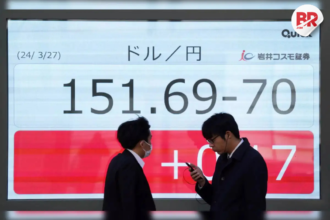
The Stock Market Rollercoaster: Is a Recovery on the Horizon?
The US stock market has been on a wild ride lately, leaving investors both nervous and hopeful. With the NASDAQ and S&P 500 dropping over 6% in March, many are wondering: Is this the end of the downturn or just the beginning?
But wait—there’s a twist. On March 12, a glimmer of hope emerged. Improved US consumer inflation data showed the inflation rate easing to 2.8%, down from January’s 3%. Could this be the turning point investors have been waiting for? Let’s dive in.

Why the Market Has Been So Volatile
The stock market is no stranger to ups and downs, but recent events have made the ride even bumpier. The NASDAQ, packed with tech stocks, has taken a big hit, losing over 6% in March. The S&P 500, which tracks a broader range of companies, has seen a similar drop.
So, what’s causing all this chaos? A big factor is President Trump’s tariff policies. Tariffs on imported goods have created uncertainty, making it harder for businesses to plan and hurting their profits. This has led to a sell-off in stocks, especially for companies that rely on international trade.
But here’s the good news: the recent dip in inflation might just be the lifeline the market needs.
How Lower Inflation Could Spark a Recovery
Inflation plays a huge role in how the stock market performs. When inflation rises, the Federal Reserve often raises interest rates to keep it in check. Higher rates can hurt companies by increasing borrowing costs and reducing consumer spending.
But with inflation easing to 2.8%, the Fed might take a softer approach. This could mean lower interest rates, which would be great news for stocks. Lower inflation also means businesses face less pressure from rising costs, and consumers might feel more confident spending money.
In short, this dip in inflation could be the spark that reignites the market.
Also Read: Cool Inflation vs. Tariff Fears: Can Investors Win the Tug-of-War?
The Tariff Trouble: A Double-Edged Sword
While inflation is easing, tariffs remain a thorn in the market’s side. Trump’s tariffs have driven up costs for businesses, and those costs are often passed on to consumers. This has hurt corporate profits and made investors nervous.
The uncertainty around tariffs has also made businesses hesitant to invest or expand, slowing economic growth. And with tensions rising between the US and its trading partners, the risk of a full-blown trade war looms large.
But if the administration decides to ease up on tariffs, it could remove a major weight from the market’s shoulders. Combined with lower inflation, this could set the stage for a strong recovery.
What Should Investors Do Now?
With so much uncertainty, it’s important for investors to stay calm and focused. Here are a few tips to navigate this volatile market:
- Watch Inflation Trends: Keep an eye on inflation data. If it continues to ease, it could mean good things for stocks.
- Stay Updated on Trade News: The outcome of trade negotiations could have a big impact on the market. Stay informed and be ready to adjust your strategy.
- Diversify Your Portfolio: Spread your investments across different sectors to reduce risk.
- Consider Defensive Stocks: Sectors like utilities and healthcare tend to hold up better during tough times.
- Look for Bargains: The recent sell-off has created opportunities to buy quality stocks at lower prices.
Also Read: Turn a Recession into Your Big Break: Smart Moves to Thrive in Tough Times
The Bottom Line: Is This the Turning Point?
The stock market’s recent volatility has been nerve-wracking, but the dip in inflation offers a ray of hope. If inflation continues to ease and trade tensions cool down, we could see a strong recovery in the coming months.
For now, investors should stay informed, stay patient, and keep an eye on the bigger picture. After all, every downturn is eventually followed by an upturn—and this one might be closer than you think.












